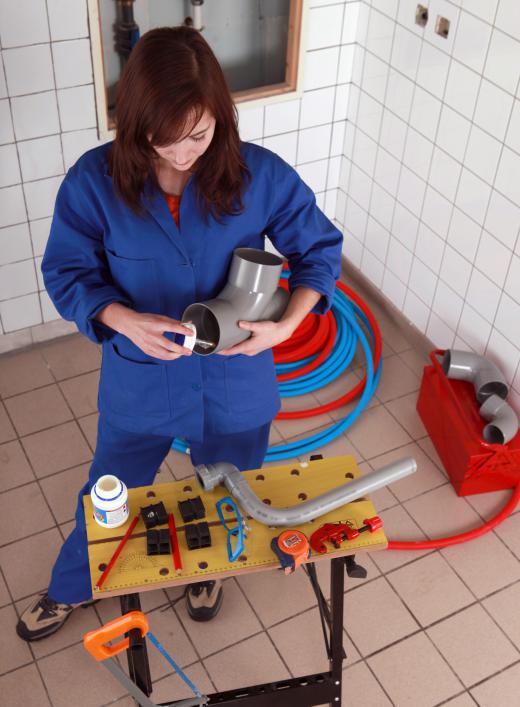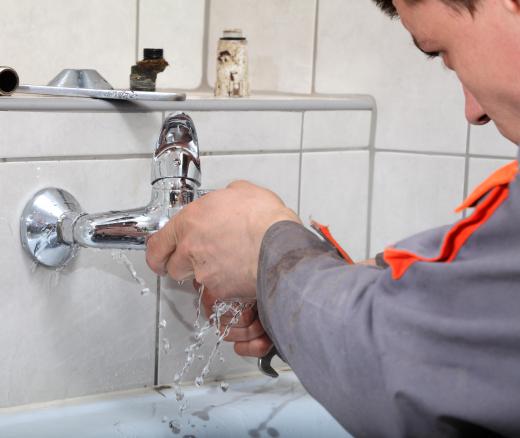Plumbing trim, much like the trim work for any building, carpentry, or cabinet making trim, is often the last of the applied parts of a fixture. Most times made to appear as a decorative piece, plumbing trim usually consists of the polished and untouched pieces of any type of plumbing work. Almost every plumbing application in a residential setting has some form of trim attached to it. This trim is often used to conceal the imperfections in the plumbing application being used.
One example of such trim can be found in the bottom of a bathroom sink bowl, around the drain pipe. A PVC or metal drain pipe that has been run through the wall and had multiple junctions soldered into it can look somewhat unsightly. As the piping comes to the bottom side of the sink bowl, it’s often attached to a piece of plumbing trim that makes the pipe appear to be fabricated from stainless steel and that fits perfectly into the sink opening.

Another example of trim used in plumbing is the faucet assembly itself, on the back of most sinks. The faucet is simply a beautified valve, which is connected to the supply pipe. Due to the desire of people to have things that are aesthetically pleasing, the pipe is not shown and it instead has a decorative faucet installed onto it.
Although most of the items that make up the common forms of plumbing trim are merely a way to beautify the functional parts of a plumbing system, there are some examples of trim that do serve more of a purpose than just being pleasing to the eye. Some plumbing trim pieces are actually threaded or coupled to the supply pipes in some applications. One example is the sink ring that is threaded into the drainage pipe. The ring creates a watertight seal at the bottom of the sink bowl; these are the most common examples of functional plumbing trim.

With the number of different applications that plumbing can be used in, and the number of materials plumbing supplies can be manufactured from, it’s no wonder that there are always newer, more modern designs available in the plumbing design world. Plumbing trim, especially functioning plumbing trim, can come in a variety of metals. Common examples are brushed nickel and sterling silver. They can also be made simply of steel, such as in most industrial plumbing applications.
